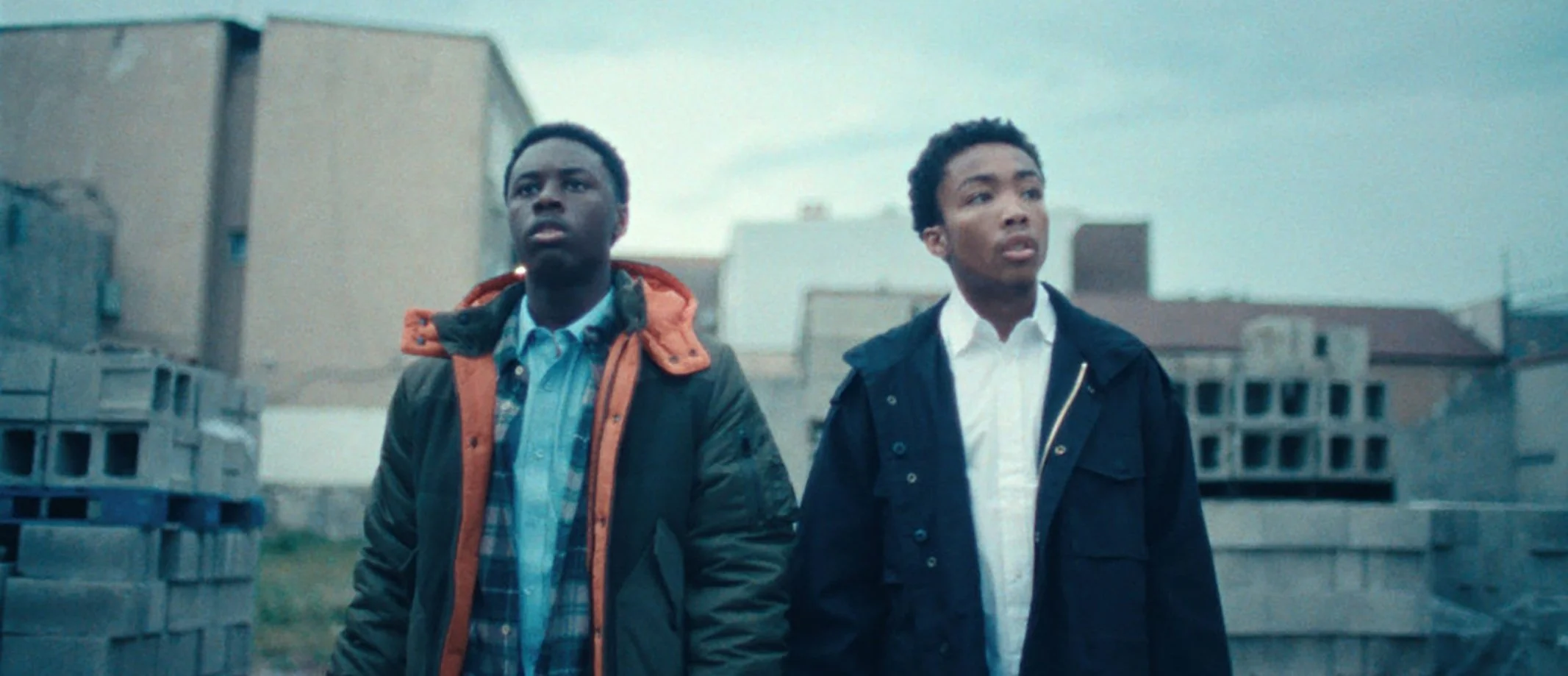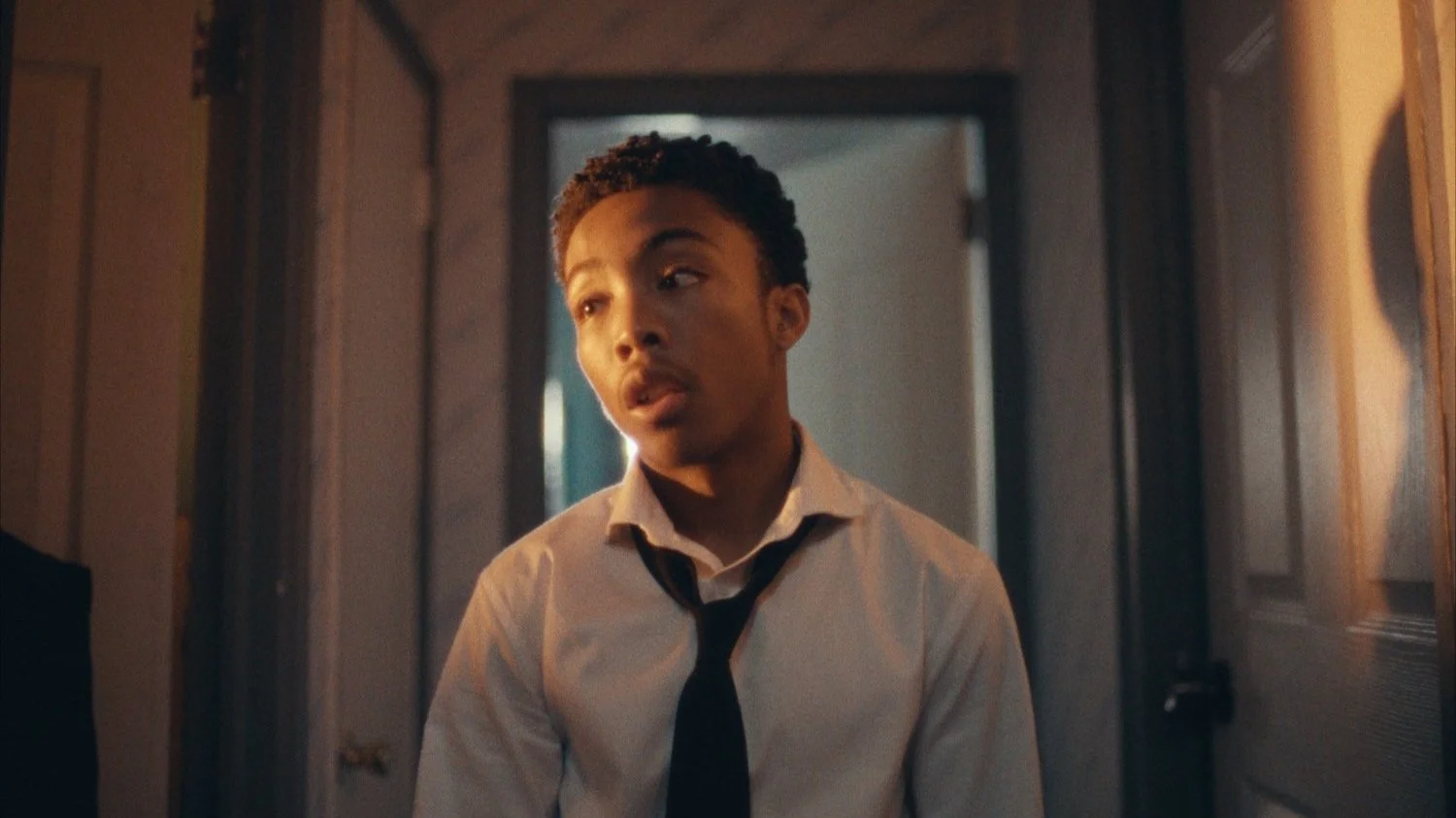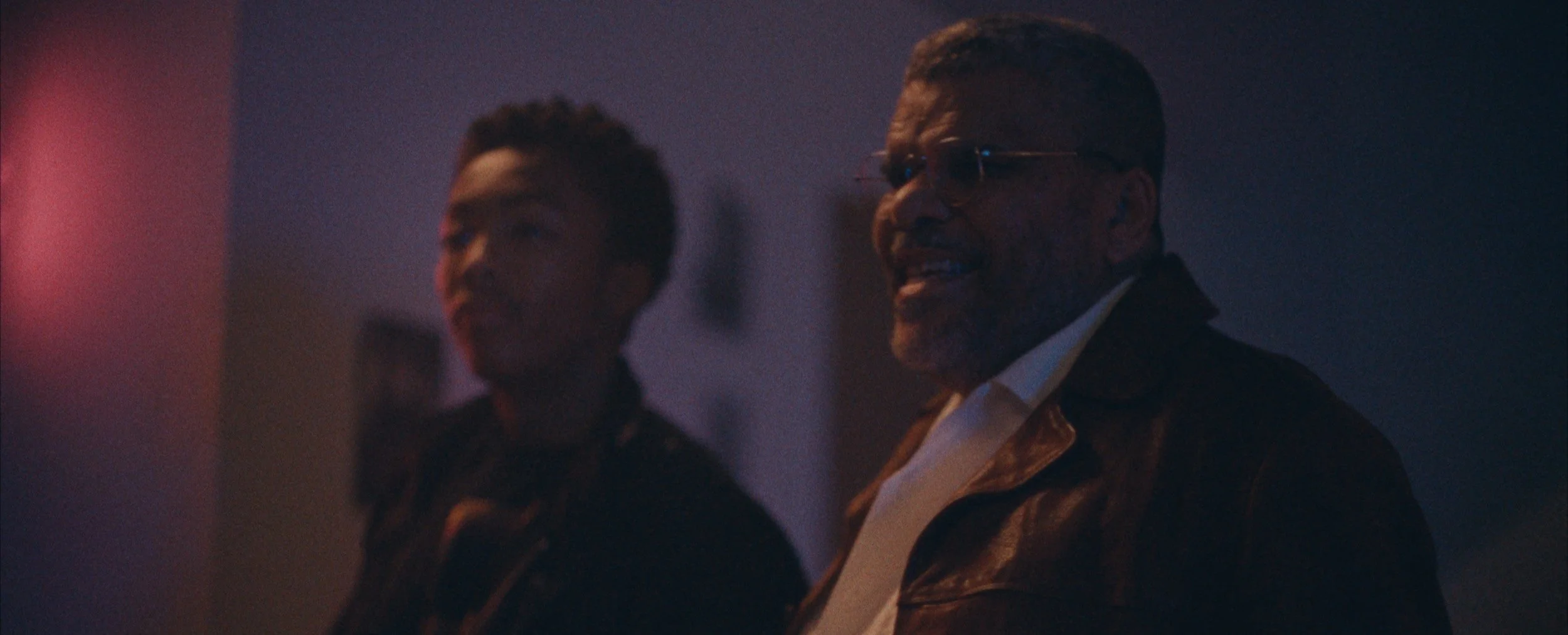By Natalia Hernández Moreno
Aristotle Torres is no stranger to the craft of transforming unique experiences into universal stories. His visually striking debut feature Story Ave takes aim at Bronx stereotypes to tenderly transform grief into creative inspiration through visual arts and the life-altering power of found-family bonds.
Recent winner of the 2024 Cinema Tropical Award for Best US Latinx Film and the Best Cinematography prize at SXSW, Story Ave will be presented on Saturday, March 2 by the Latinx Project at New York University and Cinema Tropical in the Latinx Film Showcase, a selection of inspiring films by Latinx filmmakers.
The film follows South Bronx teen Kadir (Asante Blackk), a gifted visual artist who loses his way following the death of his younger brother. Overcome with grief and struggling with the pressures of school and family, he escapes into the thrilling yet dangerous world of graffiti gangs, seeking an outlet for the creative force threatening to explode out of him.
To prove himself and join his neighborhood’s ruling gang, Kadir tries to rob no-nonsense MTA conductor Luis (Luis Guzmán) on the Story Ave subway platform. He is caught off guard when Luis agrees to give Kadir the cash if he’ll sit down to a meal with him. Following their conversation and the delicate, transformative friendship that grows out of it, Kadir sees for the first time how his artistic talent could lead to a better life.
Cinema Tropical sat down with Story Ave's director and screenwriter to discuss his approach to visual storytelling, representation of the Bronx, and his take on the current state of Latinx voices in contemporary film.
There is a beautiful pun in the film's title and the subway station where Kadir and Luis first meet. How did you craft the Bronx as both a setting that witnesses stories and a character within itself?
Yeah. Great question. I think within storytelling, especially on a medium visual, you are trying to use as many elements to evoke an emotion. And if we do our job well as visual storytellers, as viewers, you’ll be able to keep up with the drama of the story without even hearing the dialogue, because everything is working in unison as some sort of ballet. In terms of my representation of the Bronx, you know, as someone who’s from the Bronx, who was raised by the Bronx, I wanted to portray how I am who I am as a man and as an artist due to my upbringing in its dichotomy. It’s a place that holds one of the wealthiest schools in America, but also has projects.
I think that, as someone who got to experience both of those outlooks in a very tangible way on a daily basis, you’re able to curate a unique view of the world. Not to pick myself up, but I can walk into a room and have a conversation with anyone. And it was those experiences of growing up and surrounding myself with people from different cultures, backgrounds, and economic statuses. In summary, I wanted to show that culture and that dichotomy with the utmost respect, not only within its representation but with its depiction and the people that inhabit it.
When you make a film, you have to choose your battles and one that I would not budge on is representing that community and those people in the most authentic way.
Speaking of challenges of representation of that duality, what were some sources of inspiration for reversing the Bronx narrative you feel has been dominant to the media until now?
I mean, really just myself, as an Afro-Latino man growing up in this world. If you go on Twitter right now, there'll surely be some underhanded joke about how “ghetto” the Bronx is and how you’ll get robbed if you go there. It has become such a normalcy in the conversation, even within New York City, that it has become a kind of cliché trope of a joke of the five boroughs. And as someone who has, like I said, grown up there, I consider myself to be highly cultured and that stereotyped image is not a representation of me or the people I know. Or even the people from the Bronx who don’t necessarily care about culture or the arts and are still great people. And I want the Bronx to be synonymous with that and not the depiction of off-handed jokes.
Starting out your career as a director in hip-hop music videos has certainly influenced your perspective on representation and authenticity. How did you approach music selection and your collaboration with Pierre Charles for the original soundtrack and score?
Yeah. Thank you very much. Well, George Lucas once said cinema is half sound. And it goes back to what we were initially talking about regarding the different elements of wardrobe, and color, and aspect ratio. And how you can use all these very affordable things to make things feel bigger than what they are. And I think, you know, my movie was very small and I knew consciously going into it that I needed to lean into my strengths. I obviously had a rich history with music and had great relationships there. And I understand the value of music and how music can evoke an emotion or bring you back to a certain memory or a certain feeling. And I knew that it was going to be a strength and a tool for me as someone who had a very ambitious vision but didn’t necessarily have the resources to match that vision.
So it’s a lot cheaper (well, it’s all very expensive) to create a score with a phenomenal composer than it is to go back out and shoot with a full crew and actors; it’s a different undertaking. So, it was something that was very important to me coming out of the gate and, like you said, I was very fortunate to work with Pierre Charles on the original score and I worked with iconic hip-hop producer Chuck Inglish from The Cool Kids on all the original music. It was very collaborative and very cool.
When you make your first film, it’s a very scary and lonely process, so I was trying to find as many elements that I knew really well so that when I felt lost I could go back to some of just my instincts.
Diving towards production, I've read your director of photography Eric Blanco was set on a 4:3 aspect ratio to highlight the verticality of the world. How did you assemble that sense of isolation in community settings that progressively evolves into togetherness?
Yeah. Great question. Once again, it’s like leaning into strengths. As someone who comes from commercials and music videos, things looking pretty is not something I lack confidence in. We were supposed to shoot in March 2020. Then COVID happened and it gave me two years of downtime to watch this movie in my mind every day before I opened my eyes. And really think through all of the visuals.
And a lot of my inspiration for Story Ave was shooting black and brown faces the way old Hollywood shot white faces; which is very composed and very intentional. It’s not just about getting an over-the-shoulder medium, and another over-the-shoulder medium, a close-up, a close-up, and a wide to figure it out in the edit. No. When you’re looking at Luis give that line, nine times out of ten I don’t have that line from another angle. I've committed to that angle.
And that can be a gift and a curse, that is due to time. If I had more than four takes, it was like a blessing. We were shooting whole scenes out in twenty minutes. It was a combination of necessity but also being very intentional and understanding my grammar. And doing everything within my power to make sure this movie didn’t fall under the guidelines of a “Black movie” or a “Hip Hop movie” or a “Latin movie”. It’s just a movie, an emotional film that happens to feature these faces. And I think it’s that intentionality that can at least provide a little bit of a distinction for someone who can be a voyeur for this culture.
The transformation of grief into creative inspiration through visual arts and the life-changing power of a found family are very powerful subjects in your film. What are other themes you would like to explore in future projects?
More than anything, I think great art is vulnerable art. Movies are miracles and they take a lot out of you. I think it’s no coincidence that directors call their films “their babies”. You have to truly sacrifice a little bit of yourself to get it made. And I just think that if you’re going to go through that process you should be vulnerable and introspective and you should feel challenged. At least for me, I want to wake up every morning and go: “If I’m not on my A game, I could fuck today up”. I like the kind of mentality that pushes me to work creatively out of my comfort zone and forces me to continue to learn and not be complacent.
I am an artist, first and foremost, and whether it’s a still image, a film, or a painting I want to challenge myself to feel vulnerable. And I want to especially challenge the viewer to question themselves and the world around them. As long as I follow those parameters, it will lead me to appropriate themes and subject matters.
Prior to being developed as a feature, Story Ave was first contemplated –and eventually shot– as a short film. What aspects were you able to elaborate on with the extension of runtime?
I would say it’s mainly about giving context to the audience. When I make a short and when I watch shorts, I don’t want too much information. And they are very hard to tell, shorts are very difficult. I’m a huge advocate of being abruptly thrown into a conflict and then, kind of, at the end feeling like I want a little bit more. In my personal taste, I like shorts that do that. So the excitement of developing Story Ave into a feature was giving the audience context of why this young black man would rob someone at gunpoint. And my responsibility as an Afro-Latino in this world is to not contribute to the negative stereotypes of young men of color.
I had so many people tell me that, if Kadir robbed Luis within the first five minutes of the movie, this would be a different movie. And we wouldn't need all the “gang stuff”. But for me, those things were very important because I wanted the audience to not criticize Kadir by the time he robs Luis. I wanted us to feel empathetic for what this young man is going through in his life. And I think that’s the thing I’m most proud of. So hopefully now, when somebody gets on a train at 2:00 o’clock in the morning and they see someone sleeping in the corner, their initial reaction is not “Oh, that’s just a bum”. What if someone did all the right things in life and they still ended up there?
Those were the things that were really exciting for me. And to develop it into a feature was about giving more context and texture to these characters that we only spend a little bit of time within the short.
What is your take on the current state of Latin American and Latinx stories inside the United States and the support of underrepresented voices in contemporary film?
I try to be as optimistic as I can, but I’m unsure. Culture goes in trends and this industry particularly goes on trends. And I don’t know if people telling their own stories is the trend right now the way it was even last year.
As we can see, as recent of all these past lay-offs and various black and brown shows being canceled, I’m unsure. Within my own experience of making Story Ave, people offered me substantially more money than what I had to make Luis a white character. And I get the logic of it. But if we are complacent, then things will never change. So my current state is unsure, I’m a little weary but I think that what is exciting is that we can take control more than ever as storytellers. You can make a movie on an iPhone and submit it to a major film festival and they’ll watch it with serious consideration. I just hope more new, young voices continue to tell their unique stories and through that, the industry will understand how important we are, not only as creators but as consumers.
To close out this conversation, I’m curious about the critical reception of Story Ave in communities whose stories have been predominantly overlooked. What do you hope audiences take from your film?
I’d say just to feel seen. The moments within this journey that I remember the most—and that I can confidently say I’ll remember 20 years from now—are not winning SXSW or getting nominations or winning awards. Those things are great for the ego and imposter syndrome. But to me the real substantial moments after a screening are when a guy from the Bronx is crying, who you can tell is not normally vulnerable in front of other men. And that to me is key: if we can create more spaces for men to be vulnerable, I just think that’s good for the world.








